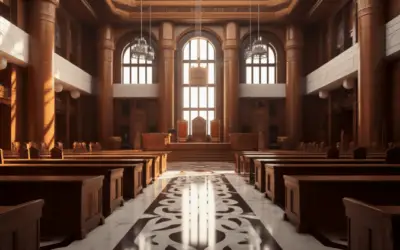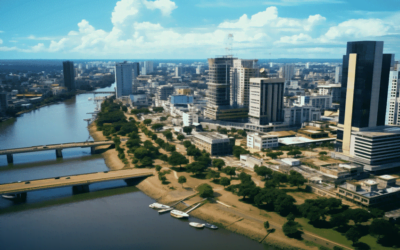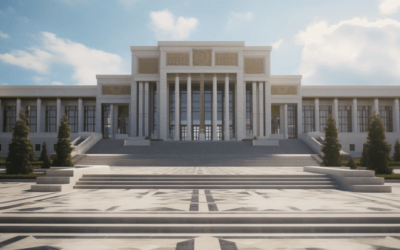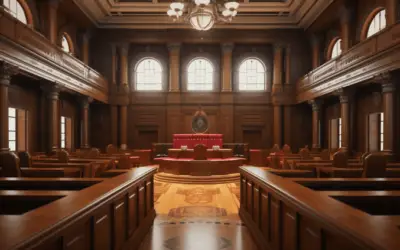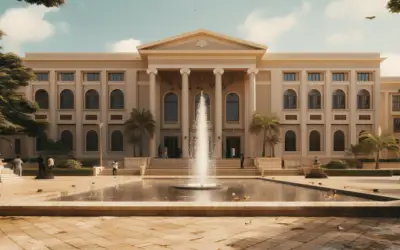Hey there, fellow drone enthusiast! Are you all set to soar the Samoan skies with your trusty drone? Well, if you’re anything like me, you’re probably itching to explore Samoa’s stunning landscapes and capture those breathtaking aerial shots.
But, here’s the deal – before you launch your drone into paradise, you’ll want to know the ins and outs of Samoa’s drone laws.
Don’t worry; I’ve got your back. I’ve dived deep into the world of Samoa’s drone regulations, researched thoroughly, and discovered everything you need to know to navigate the skies legally and responsibly.
From registration requirements to flying restrictions, I’ve got the answers to your burning questions. I’ve scoured official sources, crossed the T’s, and dotted the I’s to make sure you’re well-equipped for your drone adventures in Samoa.
So, if you’re eager to learn the ropes of Samoa’s drone laws and make sure you’re on the right side of the legal skyway, keep reading. In the following sections, I’ll guide you through the details of Samoa’s drone categories, registration process, flying restrictions, and more.
Whether you’re a newbie drone pilot or a seasoned pro, this article is your ultimate resource for understanding and complying with Samoa’s drone regulations. Let’s get started!
Overview of Samoa

Before we dive into the nitty-gritty of Samoa’s drone regulations, let’s take a moment to set the scene. Samoa, the jewel of the South Pacific, is a place of immense beauty and cultural richness.
It’s a destination that beckons travelers from around the world, including those of us who are drone enthusiasts seeking to capture its wonders from above.
Yet, as much as we’re drawn to its lush landscapes and vibrant culture, it’s essential to understand the lay of the land, figuratively and literally, when it comes to flying our drones in this paradise.
The Heart of Polynesia: Geography and Culture
Samoa, nestled in the heart of Polynesia, boasts a tapestry of lush rainforests, pristine beaches, and a vibrant local culture. The two main islands, Upolu and Savai’i, are fringed with stunning coastlines and volcanic peaks that beg to be explored from an aerial perspective. Imagine the emerald hillsides and azure waters captured by your drone’s lens, painting a picture of nature’s wonder.
The warmth of Samoan culture is equally inviting. With a deep-rooted sense of community and hospitality, you’ll find yourself not just a visitor but a cherished guest.
And in this harmonious blend of nature and culture, the allure of drone photography becomes all the more irresistible. But remember, it’s essential to respect the local culture and regulations as we embark on this visual journey.
Aviation Authorities and Their Role
When it comes to flying drones in Samoa, the Civil Aviation Authority of Samoa (CAAS) takes center stage. These aviation authorities are responsible for ensuring that the skies are shared safely and responsibly, with both manned and unmanned aircraft.
CAAS sets the rules and regulations that govern drone operations, and they play a pivotal role in safeguarding the skies and the interests of the local community.
Understanding the role of CAAS in regulating drones is crucial. It’s a reminder that, while we embrace the freedom of the skies, we also bear the responsibility to adhere to the rules that keep our hobby safe and respectful of the Samoan people and their environment.
With this knowledge in mind, let’s journey deeper into the intricacies of Samoa’s drone laws and how they shape our flight adventures in this island paradise.
Also Read: Saint Vincent and the Grenadines Drone Regulations 2024
Categories of Drones

Alright, drone enthusiasts, let’s get down to the nitty-gritty of Samoa’s drone laws. One of the first things you need to wrap your head around is how they categorize drones.
You see, Samoa, like many other places, groups these flying machines based on their weight and their intended purpose. It’s not just a bureaucratic formality; these categories determine the rules we’ll need to follow when we take to the skies.
Weight and Purpose Sorting
When it comes to categorizing drones, Samoa relies on a two-pronged approach: weight and purpose. They want to know how heavy your drone is and what you intend to do with it. It’s all about ensuring safety and accountability.
If you’re packing a lightweight drone and planning some leisurely photography, you fall into one category. If you’re working on something more serious, like commercial aerial surveys or inspections, you’ll be in another.
The weight threshold often used in many places, including Samoa, is around 25 kilograms (about 55 pounds). Lighter drones, those under this limit, usually have fewer regulatory hoops to jump through, while the heavyweights, well, they face a bit more scrutiny.
Purpose-wise, if you’re flying for fun and personal use, your responsibilities might be different than those of someone using their drone for business purposes.
Rules for Each Category
So, here’s the part where things get a bit specific. Depending on which category your drone falls into, the rules will vary. Lighter drones usually have more freedom in terms of where and how high they can fly, while their heavier counterparts might face additional restrictions.
For instance, flying near airports or in certain no-fly zones is typically a big no-no, regardless of the category.
Now, remember, these rules are in place for a good reason – safety. They’re designed to prevent collisions with manned aircraft, ensure the privacy of people on the ground, and minimize disturbances to the peace and tranquility of Samoa’s scenic landscapes.
Understanding these categories and the corresponding rules is vital for a safe and enjoyable drone experience in this island paradise. So, stick around, we’re about to delve deeper into what these categories mean for your aerial adventures.
Also Read: Saint Lucia Drone Regulations 2024
Drone Registration

Alright, fellow drone pilots, let’s tackle a crucial piece of the puzzle: drone registration in Samoa. It’s not the most thrilling part of our hobby, but it’s one of the most important. If you want to fly your drone in these beautiful Samoan skies legally, you’ve got to go through the registration process with the Civil Aviation Authority of Samoa (CAAS). So, let’s break it down and see what’s involved.
Steps and Requirements for Registration
Drone registration, like in many countries, is Samoa’s way of keeping tabs on the drones in their airspace. To get your trusty flying machine registered, you’ll need to go through a process that usually includes some paperwork and a fee.
The specifics might change, so it’s best to double-check the latest requirements with the CAAS. It’s not rocket science, but it’s an essential step in the path to responsible drone ownership.
Typically, the process will involve providing your details and those of your drone. They want to know who you are, what you’re flying, and how to contact you. It’s all about accountability, ensuring that if something goes wrong, there’s a way to trace the drone back to its owner. While it might seem like red tape, it’s part and parcel of the drone game, and it helps ensure safety in Samoa’s skies.
Adhering to Registration Regulations
The big ‘why’ behind drone registration? Safety and responsibility, my friend. It’s a way of making sure that drone pilots operate within the bounds of the law.
The CAAS, just like aviation authorities around the world, wants to prevent accidents and conflicts in the sky. By registering your drone, you’re essentially saying, “I’m in this hobby seriously, and I’ll follow the rules to keep our skies safe.”
Now, it’s not just about paperwork; it’s about being a responsible pilot. When you follow the registration regulations, you’re showing that you respect the rules and the safety of the people and property below.
Plus, it’s a ticket to enjoy your flights without the nagging feeling that you might be breaking the law. So, stay with me here, and we’ll explore more about how to make this registration process a breeze.
Also Read: Saint Kitts and Nevis Drone Regulations 2024
Flying Restrictions

Now, my fellow drone adventurers, let’s talk about something that’s as crucial as the propellers on your drone: flying restrictions in Samoa. Sure, it’s tempting to launch your drone into the skies wherever you please, but there are certain no-fly zones to be aware of.
These restricted areas are like “no entry” signs in the world of drone flight, and we need to understand where they are and why they’re off-limits.
No-Fly Zones: Airports, Government Buildings, and Sensitive Areas
First and foremost, you need to know that Samoa, like any other nation, has its sensitive spots. These include places like airports, government buildings, and other high-security zones. It’s a no-brainer that flying a drone near an airport can spell disaster.
We’re talking about safety concerns and the need to avoid collisions with manned aircraft. The last thing you want is your drone coming into contact with a commercial plane taking off or landing.
Now, government buildings and sensitive areas are a different story. It’s not just about safety; it’s also about respecting privacy and security. When you’re exploring Samoa’s skies, you’re essentially a guest, and you need to be a respectful one.
Flying your drone near these areas might not just land you in hot water legally, but it could also rub the locals the wrong way. It’s all about being a responsible and considerate pilot.
Check and Adhere to Specific Restrictions
The key takeaway here is simple – always check for and adhere to any specific flying restrictions that might be in place. Rules can change, and there may be temporary restrictions for specific events or situations.
So, before you lift off, do your due diligence. Keep an eye on local regulations and updates, and always ensure you’re flying your drone within the legal boundaries.
It’s a matter of keeping the skies safe, respecting privacy, and making sure your drone adventures in Samoa remain trouble-free. So, stick around, and we’ll delve into the finer details of how to navigate these restrictions like a pro.
Also Read: Rwanda Drone Regulations 2024
Altitude Limits

Ah, the thrill of soaring higher and higher with your drone, capturing breathtaking views from above – it’s something we all crave, isn’t it? Well, when you’re flying your drone in Samoa, there’s a little something to keep in mind, and it’s all about altitude limits.
These rules are here to ensure our flights are safe, and they’re part and parcel of being a responsible drone pilot. So, let’s talk altitude, and why it matters.
Altitude Restrictions: Up to Around 120 Meters
In Samoa, the sky’s the limit, but not quite. You see, the general altitude limit for drone flights in Samoa hovers at around 120 meters above ground level. It’s not set in stone, but it’s a good rule of thumb to follow.
Now, why this 120-meter mark? It’s all about ensuring the safety of both your drone and anything else sharing the sky with you. It’s a sweet spot that allows for fantastic aerial photography while avoiding potential conflicts with manned aircraft.
Of course, there might be specific situations or zones where different altitude restrictions apply, so it’s always wise to check local regulations. But overall, keeping your drone below this limit is a smart way to make sure your flights are safe, legal, and respectful of Samoa’s airspace.
Importance of Maintaining Safe Altitude
Maintaining a safe altitude isn’t just about following the rules; it’s about being a responsible pilot. By staying within the specified limits, you’re minimizing the risk of accidents, collisions, and disturbances.
Imagine your drone soaring above a beautiful Samoan beach, capturing the magic of the moment, all while respecting the safety of those on the ground and the integrity of the airspace. It’s a win-win situation.
The importance of flying at a safe altitude isn’t just about rules and regulations; it’s about preserving the beauty and serenity of Samoa’s skies.
So, as we embark on our drone adventures in this stunning paradise, let’s remember the significance of adhering to these altitude limits, ensuring the safety and serenity of the Samoan skies for all of us to enjoy.
Also Read: Russia Drone Regulations 2024
Safety Precautions

Alright, fellow drone aficionados, let’s chat about something that’s truly close to our hearts – safety precautions.
We all love the idea of capturing awe-inspiring aerial shots, but doing so responsibly is paramount. Whether you’re a newbie drone pilot or a seasoned pro, understanding these precautions can make all the difference in our flying experiences.
Safe Drone Operation and Visual Line of Sight
One of the golden rules of drone operation is to always maintain visual line of sight with your flying buddy. What does that mean? Well, it’s all about keeping your drone within your sight, unaided by binoculars, telescopes, or fancy gadgets.
This is not just a legal requirement in many places, including Samoa, it’s also a common-sense safety measure. You need to be able to see your drone to control it effectively, especially if something unexpected happens during the flight.
In addition to visual line of sight, ensuring your drone’s in good working order before each flight is equally important. Regular maintenance and checks can prevent mid-air surprises and ensure you’re in control of your flying camera at all times.
Avoiding People, Vehicles, and Animals
Now, here’s where respect and responsibility come into play. Avoid flying your drone near people, vehicles, and animals as much as possible.
Why? It’s all about safety, privacy, and courtesy. Imagine the potential risk of an accident when a drone hovers near people, or the intrusion into someone’s privacy when it flies too close to their home.
As for animals, the noise and sight of a drone might cause unnecessary stress or panic. We want to enjoy our flights, but we don’t want to cause distress to others in the process.
It’s all part of being a thoughtful pilot. So, keep these safety precautions in mind as we embark on our drone adventures, and you’ll not only capture fantastic footage but also be a respectful and responsible pilot in Samoa’s skies.
Also Read: Romania Drone Regulations 2024
Commercial Use

Now, here’s where things get a bit more serious, folks. If you’re looking to use your drone for commercial purposes in Samoa, there’s a different set of rules to dance to.
Commercial drone operations open up exciting possibilities, but they also come with more responsibilities. So, let’s dive into what it takes to go commercial with your drone in this Pacific paradise.
Permissions and Licenses for Commercial Drone Use
If you’re aiming to use your drone for anything beyond personal and recreational purposes, you’ll need special permissions and licenses.
This is the case in most countries, Samoa included. These permissions are all about ensuring that your commercial operations meet certain standards and safety measures. They’re also there to protect the interests of local businesses and individuals.
For instance, you might need to obtain what’s commonly known as a Remote Pilot License (RePL). It’s like the driver’s license for drone pilots. It proves you’ve got the skills, knowledge, and responsibility to fly your drone commercially.
It’s a bit of a process, and there may be certain requirements to meet, like training and exams. But it’s a necessary step if you’re planning to offer services like aerial photography, surveying, or inspections in Samoa.
Process and Requirements
So, how do you go about getting these permissions and licenses? Well, there’s usually a process to follow, and it might involve paperwork and fees.
You’ll need to prove your competence and understanding of the rules and regulations, as well as the safety measures in place. It’s all about ensuring that you’re not just a drone enthusiast but a professional pilot, and that’s a good thing.
The requirements might vary, so it’s best to check with the Civil Aviation Authority of Samoa (CAAS) for the most up-to-date information. But don’t be discouraged; while it may seem like a few hoops to jump through, it’s a way of demonstrating your commitment to flying responsibly.
Commercial drone use opens up new horizons for your drone adventures, so stick around, and we’ll explore the ins and outs of this exciting opportunity.
Also Read: Qatar Drone Regulations 2024
Importation and Customs

Now, let’s chat about an aspect that’s often overlooked when it comes to our beloved drones – importation and customs.
If you’re planning to bring your drone into Samoa or even purchase one while you’re here, there are customs regulations and requirements to consider. Ensuring you navigate this process smoothly is key to kicking off your drone adventures without a hitch.
Customs Regulations and Drone Importation
Importing a drone into Samoa isn’t as straightforward as packing it in your suitcase. There are customs regulations and requirements that you’ll need to be aware of.
These regulations are in place to ensure that the drones entering the country comply with safety and technical standards, just like any other electronic device.
In many cases, you might need to declare your drone to customs authorities upon arrival. There could be fees or duties to pay, and the drone might be subject to inspection. It’s all part of the process to ensure that the drone doesn’t pose any risks to the local environment or to other devices in the country.
Importance of Compliance with Customs Regulations
Compliance with customs regulations is more than just a bureaucratic procedure; it’s about ensuring safety, fairness, and responsibility.
These regulations are there to protect the local environment, the interests of local businesses, and the well-being of Samoan residents. By adhering to these regulations, you’re not only staying on the right side of the law but also contributing to the safety and integrity of Samoa.
So, whether you’re importing a drone for personal use or bringing one in for commercial drone operations, make sure you’re well-informed about the customs process.
It’s a step you shouldn’t skip, and it’s part of the responsible drone ownership package. Stick around, and we’ll dig deeper into what it takes to get your drone through customs seamlessly.
Also Read: Portugal Drone Regulations 2024
Recent Changes and Updates

Alright, drone enthusiasts, we’ve covered a lot of ground when it comes to Samoa’s drone laws. But here’s the deal – laws, rules, and regulations can change.
It’s not a one-time deal; it’s a journey, and part of that journey is staying up-to-date with evolving drone laws and regulations. The drone world is an ever-shifting landscape, and being in the know is vital for a smooth and responsible flying experience.
Keeping Up-to-Date with Evolving Drone Laws
The drone laws you’re following today might not be the same in a few months or years. That’s why it’s crucial to keep your finger on the pulse of any changes or updates.
New laws might come into play, or existing ones could be modified. It’s all in the name of adapting to new technology, ensuring safety, and addressing new challenges.
The beauty of staying updated is that it keeps you in the clear. Ignorance of the law won’t save you from the consequences of breaking it. So, whether you’re a local or a visitor, making sure you’re in the loop with the latest drone regulations is a must.
Resources for Finding the Latest Information
Now, the big question is, how do you stay informed about the latest drone regulations in Samoa? The good news is there are resources available to help you do just that. One of the most reliable sources is the Civil Aviation Authority of Samoa (CAAS) website.
It’s usually where you’ll find official updates, guidelines, and any recent changes to the drone laws. It’s like your one-stop shop for all things drone-related in Samoa.
You can also reach out to local authorities or organizations involved in aviation. They’re often more than willing to provide guidance and updates. And, of course, you can join drone enthusiast communities or forums, where fellow pilots share knowledge and experiences.
Staying updated isn’t just a legal obligation; it’s a way to ensure that your drone flights in Samoa are as enjoyable and safe as possible. So, stay with us as we explore the latest developments and updates in Samoa’s drone laws.
Also Read: Poland Drone Regulations 2024
Recent Changes and Updates

We’ve covered a lot about enjoying the drone life in Samoa, but here’s the reality check – breaking drone laws can have consequences. It’s not all blue skies and breathtaking views; there’s some legal fine print we need to be aware of.
So, let’s dive into the potential penalties and why it’s crucial to operate our drones within the bounds of the law.
Potential Fines, Legal Consequences, and Penalties
Okay, let’s talk about consequences. Violating drone regulations in Samoa can lead to fines, legal trouble, and penalties. The severity of these consequences can vary based on the nature of the violation and the specific laws broken. For example, flying your drone too close to an airport or invading someone’s privacy with your drone might land you in hot water.
Keep in mind that Samoa’s authorities take these regulations seriously, and they’re in place to protect the safety and privacy of all residents and visitors.
While we all love the freedom and creativity that comes with flying drones, it’s crucial to remember that there are boundaries we should respect. Ignoring these boundaries can result in a less-than-pleasant drone experience.
The Importance of Operating Drones Within the Law
Why do we drone enthusiasts need to stay within the bounds of the law? It’s not just about avoiding fines and legal trouble, though that’s a good enough reason on its own.
It’s about being responsible and respectful pilots. Operating our drones within the law ensures that we’re not causing disturbances, violating privacy, or compromising safety in any way.
It’s also about preserving the beauty of Samoa’s landscapes and the trust of its people. When we fly responsibly, we contribute to a positive image of drone pilots as mindful and considerate individuals. So, stick with the rules and regulations, and your drone adventures in Samoa will be memorable for all the right reasons.
Also Read: Philippines Drone Regulations 2024
Final Thoughts on Samoa Drone Laws

So, we’ve covered a lot of ground in our exploration of Samoa’s drone laws. It’s been a journey through the do’s and don’ts, the regulations, and the responsibilities of drone pilots in this island paradise.
Now, let’s take a moment to recap and understand why it’s crucial to fly responsibly and within the bounds of the law in Samoa.
Throughout this article, we’ve delved into various aspects of Samoa’s drone laws. We’ve explored the registration process, flying restrictions, altitude limits, safety precautions, commercial use, importation and customs, the importance of staying updated, and the consequences of breaking the rules. These are the building blocks of responsible drone operation in Samoa.
We’ve learned that while Samoa offers stunning vistas and endless opportunities for drone adventures, it also expects its drone pilots to be considerate, law-abiding, and safety-conscious. By understanding and following these regulations, we can enjoy our drone flights while respecting the privacy, safety, and rights of others.
As we wrap up this journey through Samoa’s drone laws, it’s important to emphasize the significance of responsible and legal drone operations. It’s not just about staying on the right side of the law; it’s about being a mindful pilot. It’s about preserving the pristine beauty of Samoa’s landscapes, ensuring the safety of its people, and contributing to a positive image of drone enthusiasts.
Samoa’s skies are a canvas waiting to be explored, and by adhering to the regulations, we ensure that these skies remain a haven for all drone pilots. So, whether you’re a local or a visitor, remember that responsible drone operation is the key to unlocking the full potential of your drone adventures in this tropical paradise. Let’s fly high, but let’s do it responsibly.
Also Read: Peru Drone Regulations 2024
Frequently Asked Question
1. Can I fly my drone in Samoa without registering it?
In Samoa, it is a requirement to register your drone with the Civil Aviation Authority of Samoa (CAAS) before operating it. This applies to both residents and visitors who intend to fly a drone in the country. Registering your drone helps ensure accountability, responsible flight, and compliance with local regulations.
2. Are there specific no-fly zones in Samoa for drone operations?
Yes, Samoa has designated no-fly zones to ensure safety and protect sensitive areas. These areas typically include airports, government buildings, and other high-security locations. Flying your drone near these zones can result in legal consequences and poses a risk to aviation safety and security. It’s essential to check for and adhere to specific restrictions and stay updated on any changes.
3. What is the maximum altitude I can fly my drone in Samoa?
he general altitude limit for drone flights in Samoa is around 120 meters above ground level. This limit is in place to ensure safety and prevent potential conflicts with manned aircraft. However, specific situations or locations might have different altitude restrictions, so it’s essential to be aware of local regulations and guidelines.
4. Can I use my drone for commercial purposes in Samoa?
Yes, you can use your drone for commercial purposes in Samoa, such as aerial photography, surveying, or inspections. However, you must obtain special permissions and licenses, like a Remote Pilot License (RePL). These licenses demonstrate your competence and knowledge as a professional pilot. Adhering to the regulations for commercial drone use is essential to ensure safety and compliance with the law.
5. What are the consequences of violating drone laws in Samoa?
Violating drone laws in Samoa can lead to potential fines, legal consequences, and penalties. The severity of these consequences may vary depending on the nature of the violation and specific laws broken. It’s essential to operate your drone within the bounds of the law to avoid legal troubles, preserve safety and privacy, and contribute to a positive image of drone pilots in Samoa. Ignorance of the law won’t exempt you from the consequences of breaking it, so responsible and legal drone operation is crucial.






